What is the Difference Between the Whites in Oil Painting?
When choosing a white oil paint to include on your palette you can be faced with more shades than you know what to do with. Although they may all seem similar on the surface, there are certain defining characteristics that set them apart from one another. Here we have compiled some useful information that should help you choose the perfect white for your palette.
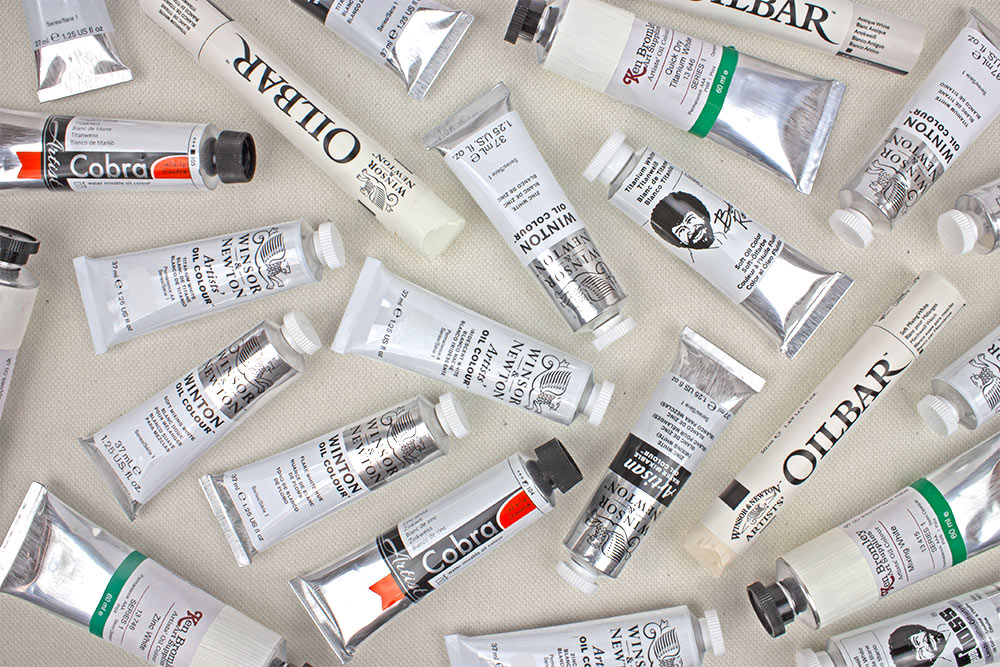
Discerning the difference between whites can be a little difficult if you are just beginning oil painting. Although they may look similar on the swatches on your paint tube, each white will bring different working properties to your practice. Choosing the correct white may be one of the most important choices that you make!
Oils artists are faced with an overwhelming array of whites. Watercolour purists will rely solely on the white of the paper to create contrast and tonal range, and acrylics artists will commonly only have two or three whites to choose from. As oil painting has a much longer history, a vast number of whites have been developed to meet different needs of oils artists.
A suitable white is a mainstay of any artists palette, and will account for a large portion of the paint that ends up on your canvas. Lots of artists, especially beginners, will pick up one tube of white and assume that it will do the same job as other whites on the market, which is simply not the case. Learning the difference between the properties of the different whites on the market will help you improve your painting and achieve the effects you desire. Below we have included an overview of whites throughout painting history and compared some of the whites that are available to contemporary painters today.
A History of White Oil Paint
White was one of the very first pigments to be used by artists, and the very first lead based whites were first introduced in Ancient Greece; they are perhaps the worlds oldest manufactured pigment. Their usage became increasingly common during the Renaissance period and lead pigments became prevalent in most classical European paintings. Whites containing lead were flexible and durable, so artists did not have to worry about their paint cracking. The three original lead-based white oil paints were:
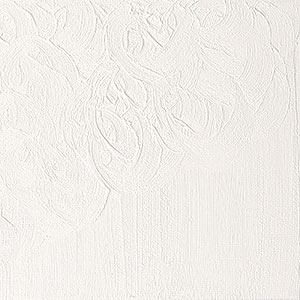 |
Flake WhiteFlake White is the traditional lead-based white. Flexible, durable and quick drying, this white was a favourite on many artists’ palettes. Zinc was added to this white to improve its consistency, but overall it remains quite stiff. It is warmer than Titanium White and firmer in consistency. |
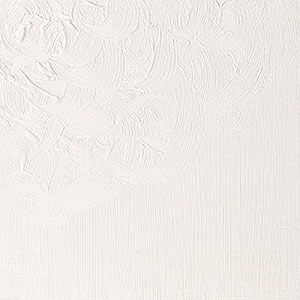 |
Cremnitz WhiteCremnitz White is also made from lead, although no zinc is added into the mix which has an impact on its consistency. This white is notably more stringy and was preferred by artists who would rather use a pure lead colour. It is similar to pigments that would have been used by the Old Masters. This white is also fast drying. |
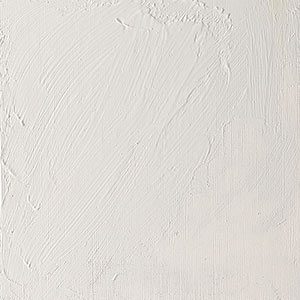 |
Foundation WhiteFoundation White is opaque, lightfast and permanent. Zinc was added to this white to improve its texture – more than in Flake White. It is ground with Linseed oil and is fast drying, so it was used for underpainting. It has a warm, yellowish temperature bias. This paint was replaced by a lead-free underpainting white. |
Because of their rich artistic history lead based whites are still used by convervators and art restorers, however they have been phased out of many commercially available artists paints because of their toxic properties. As the insdustry became more aware of the damaging properties of lead, paint manufacturers began to formulate safer lead-free alternatives. Titanium based whites were first introduced in the early 1900s as a safer substitute.
Choosing a White Paint
Before you choose a white paint to include on your palette it is important to ask yourself some questions. What do you want the white to bring to your work? Thinking about the properties that would be most vauable to your work will help you narrow down your choices considerably. Below is a summary of the main properties of an oil paint.
Texture |
|
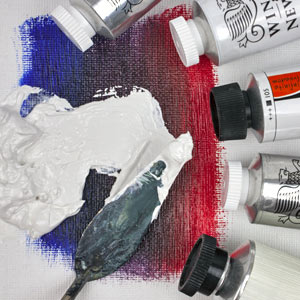 |
The consistency of your oil paint will be as important as its appearance on your palette. Oil whites can vary dramatically in their texture, from very stiff to soft. Stiffer whites will have a greater resistance under your brush or palette knife, and can be used to easily create impasto techniques. Softer whites are the most brushable straight from the tube and show little resistance to your brush or knife. Some whites occupy a middle ground, where they are workable straight from the tube but will also retain brush strokes and sculptural detail. |
Temperature |
|
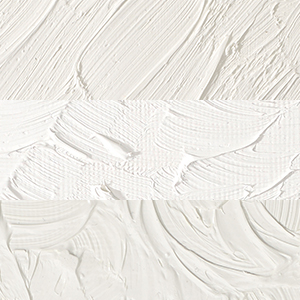 |
Oil whites will all have subtly different shades and are generally classed as being warm, cool, or neutral in temperature. Assessing the temperature of white paints will not be an important consideration for many artists. However those that use continuous or expansive blocks of white, or use white as a pure colour in their work will need to bear this in mind. Some whites are also prone to yellowing with age, so that is another detail to factor into your choices. If you are looking for a white that will retain its original brightness, you are best sticking to those formulated with Safflower oil as this is less likely to yellow over time. |
Tinting Strength |
|
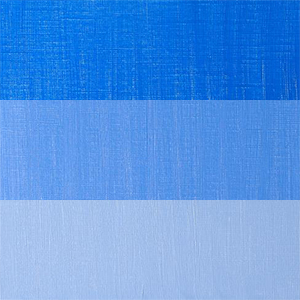 |
Different whites will have different tinting strengths, which will effect the way that your colour mixes appear in your artwork. Opaque whites, such as Titanium White have a high tinting strength. Although this is suitable for some applications, it can sometimes overpower mixes and would be unsuitable where transparency is needed. If you paint portraits you may find a less opaque white more suitable for capturing the translucency of skin tones. Similarly landscape artists that paint mists or fogs could find a low-tinting white useful. Whites with a low tinting strength are great for modifying light without completely whiting out layers below. |
Drying Time |
|
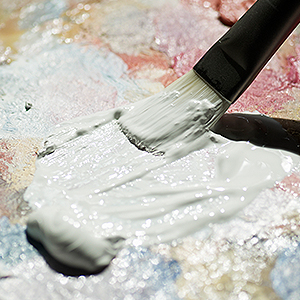 |
Traditional oils are known for their long drying times. While this may be suitable for some artists, there are certainly benefits to having a quick drying white in your collection. Quick drying oils are made with an alkyd resin, which speeds up their drying rates. Ideal for underpainting, these fast drying alternatives retain most of the properties of their traditional oil counterparts. They are also fully compatible with traditional oil colours, so using a fast drying white as a base for your mixes means that they will dry at a quicker rate overall. Traditional oil whites will vary in their drying rates; in general whites made with linseed oil will dry faster than those made with safflower or poppy oil. |
A Summary of White Oil Paints
Below you will find a short description of some of the whites that will be available to you as an oil painter. Some of these whites may go under slightly different names from brand to brand, but most names will remain consistent.
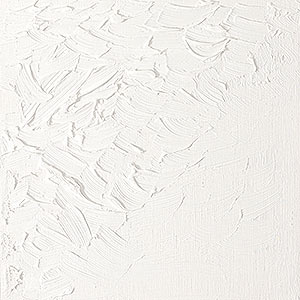
|
Titanium WhiteTitanium White is the most popular white you will find on most oil painter’s palettes. It’s a brilliant all rounder and a good choice for blocking in. Titanium White reflects back a lot of light compared to other whites, which makes it appear much brighter. It can be used for mixing although you may find that it has a tendency to overpower some mixes. Applied straight from the tube, it will allow very little undertone to show through; so it is definitely not suited to creating transparent effects. It’s consistency is a little softer than Flake White No. 1. It has a neutral bias, is slow drying and non yellowing and has no lead content. Temperature Bias: Neutral Opacity: Opaque Drying Time: I Available in Artists’ Oil Colour, Winton, Artisan, Griffin, Cobra, Bob Ross and Ken Bromley. |
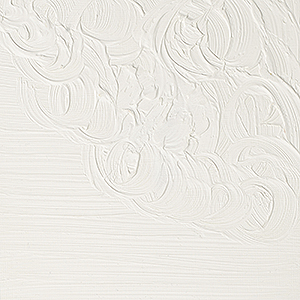
|
Zinc WhiteZinc White is the least opaque white, making it an ideal choice for glazing and tints. It has a lower tinting strength than Titanium white and is great for lightening mixes without overpowering them. When applied straight from the tube it will allow some of the undertone to show through due to its transparency. This makes it a great white to use to create subtle tints and variations in tone without loosing the natural transparency of your pigments. Zinc white is the stiffest white in consistency and has a cool colour bias. Non-yellowing and containing no lead, this white is slow drying and is a great addition to most palettes. It is not advisable to use Zinc White as your primary white within a painting as its zinc content makes it brittle. Temperature Bias: Cool Opacity: Transparent Drying Time: I Available in Artists’ Oil Colour, Artisan, Winton, Cobra and Ken Bromley. |
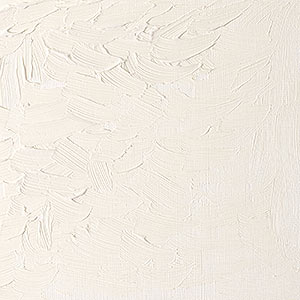
|
Transparent WhiteTransparent White is a semi-transparent colour that is best suited for mixing tones and glazes. It has an extremely low tinting strength and will provide the palest glazes. Transparent white has a neutral bias, contains no lead and is non-yellowing. Temperature Bias: Neutral Opacity: Semi-Transparent Drying Time: I Available in Artists’ Oil Colour. |
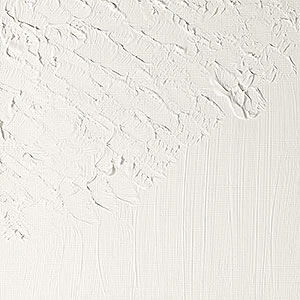
|
Mixing WhiteSometimes known as Soft Mixing White, this white is useful for making glazes and tints. Neutral and transparent , this white has the softest consistency and has a lower tinting strength than Titanium White. It is also known as ‘Soft’ mixing white in some oils ranges. It is comparatively quick drying and non-yellowing, and also contains no lead. Temperature Bias: Neutral Opacity: Transparent Drying Time: III Available in Griffin, Artisan, Winton and Ken Bromley. |
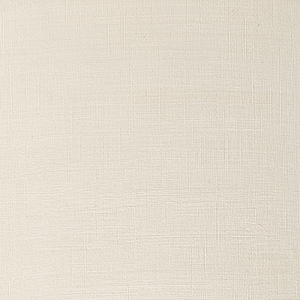
|
Iridescent WhiteIridescent White contains a mica based pigment that has a pearlescent shimmer. This shimmer is particularly enhanced when used with transparent pigments. It is useful for creating pearlised effects and is semi-opaque with a neutral bias. This white has a medium drying rate, is non-yellowing and contains no lead. Temperature Bias: Neutral Opacity: Semi-Opaque Drying Time: II Available in Artists’ Oil Colour. |
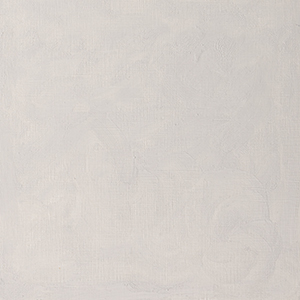
|
Antique WhiteAntique white can be found in some oil ranges. This white has a warm colour bias and creates much more mellow mixes than when using a harsh white, such as Titanium. These whites are non-yellowing and contain no lead. Temperature Bias: Warm Opacity: Opaque Drying Time: I |
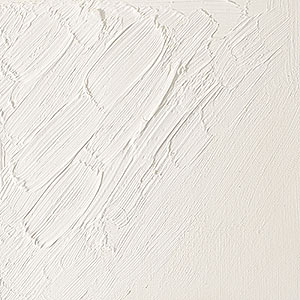
|
Flake White HueFlake White Hue has been specifically formulated to be a replacement for the lead-based Flake White No 1. It is completely Titanium Based and avoids lead based pigments altogether. It has a lower tinting strength than Titanium white and is slightly stiffer in it’s consistency. This hue has a similar drying time to its lead based equivalent and has a warm colour bias. Temperature Bias: Warm Opacity: Opaque Drying Time: II Available in Artists’ Oil Colour and Winton. |
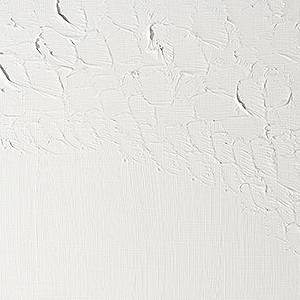
|
Fast Drying WhitesWhile many artists are attracted to oils due to their slow drying properties, it can certainly be handy to have a quick drying white on your palette. Fast drying whites are usually dry within 24 hours, so they certainly speed up your painting process. If you use fast drying whites in your mixes you will also find that it speeds up the overall drying time of your colours. We have fast drying whites available in the Griffin and Ken Bromley Oil ranges. |

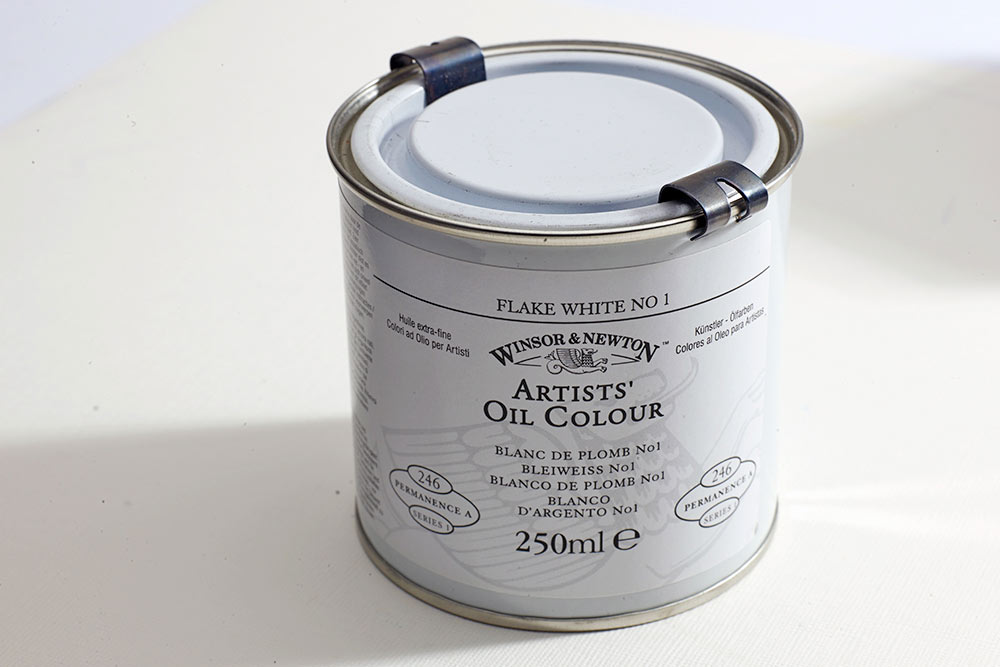
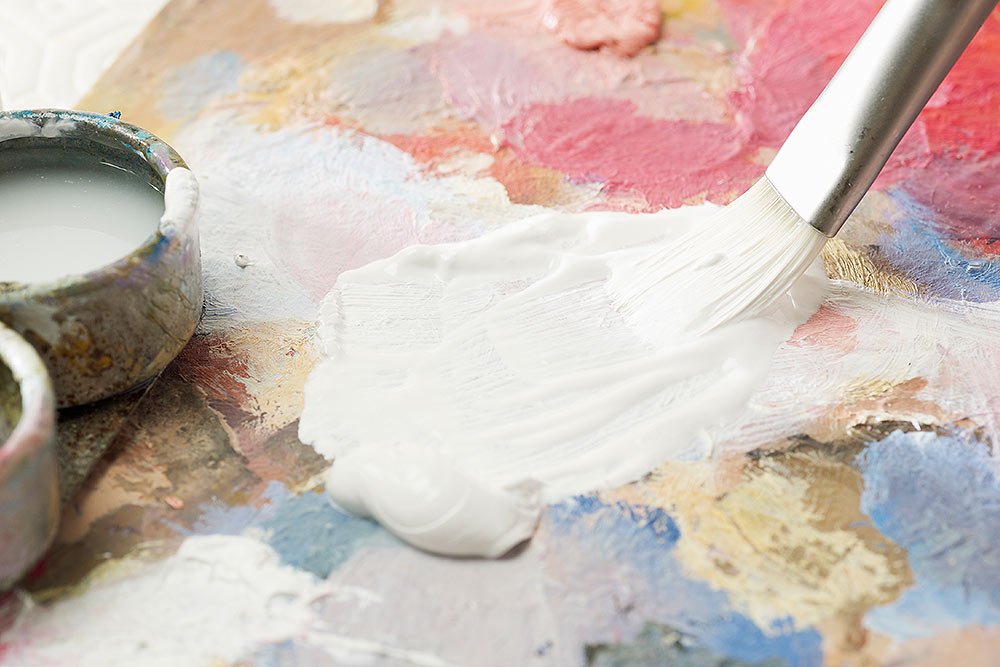

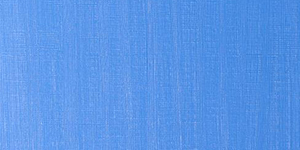
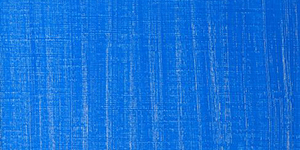
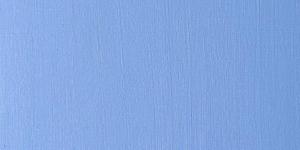
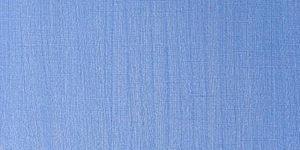

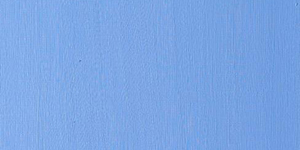

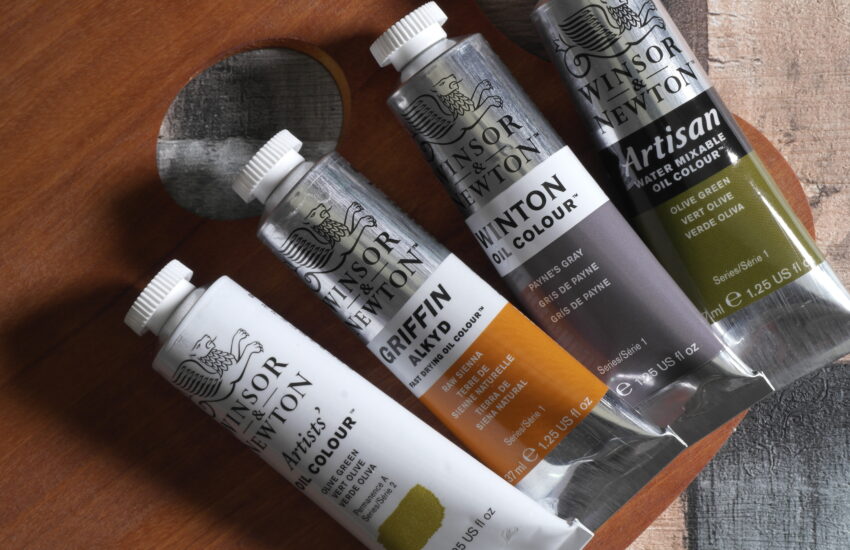





I have been given a large tube of flake white. Can I mix it with linseed oil as a thinner type magic white to use?
Hi Amanda. If you want to make your own version of Bob Ross Liquid (Magic) White we would suggest using a mixture of Titanium White, Stand Oil and Sansodor. A recipe can be found on our blog post here – https://www.artsupplies.co.uk/blog/bob-ross-materials-the-joy-of-painting-wet-on-wet/. Essentially you would need to mix 4 parts Stand Oil to 1 part Sansodor. Once mixed you should combine 4 parts Titanium White to 1 part of this mixture and you will have a paint similar to Bob Ross Liquid White. Flake White does have different properties to Titanium White, and if you are using genuine Flake White it will contain lead, so we would advise against using them.
This is very helpful, as I had no idea about the reasons for differences between white paints, and shall now be able to make more informed use of them.
I don’t understand the 3 words “It is not advisable to use Zinc White as your primary white WITHIN A PAINTING (as its zinc content makes it brittle.) I only use zinc white, in all my layers of oil painting.
Hi Susan. Thanks for your comment. Zinc White isn’t generally used as the main white on a palette due to concerns about its stability and film strength by some artists. Some manufacturers are moving to omit it from their pre-mixed colours (eg. Michael Harding Phthalo Blue & Zinc White, is now Phthalo Blue & Titanium White). If you use it in your work and are happy with the results there is certainly no reason why you shouldn’t use it. Golden Artists Colours have a great FAQ regarding the pigment on their website.
Good to know, thanks.
What white is best for skin
mixing, please?
Hi Mary. Thanks for your comment. There aren’t any hard and fast rules about painting skin tones in oils. We actually have two tutorials on our blog by Liam Dickinson and Christine Southworth, who both use a neutral Titanium White to create their portraits. Titanium White is the most popular white and a great all rounder in general. Other artists may prefer to go with something like Flake White Hue for a warmer temperature.
I live in UK where flake white is banned. I use as a replacement, Michael Harding warm white for subtle skin tones, sometimes a touch of titanium for highlights. If you have titanium and zinc, try a 50/50 mix for slightly more transparent and less tinting to keep you colour pigments alive.
It’s about time I found someone who knew what they were talking about!
Do you know much about the crimnate white lead carbonate as I’ve heard it’s a good transparent white for using with French ultramarine to give that atmospheric distance in a landscape.
Hi Christina. Unfortunately we don’t stock any transparent lead based white paints, but both Zinc and Mixing Whites are transparent.
Which white to use has always been a mystery to me and have always tended to use titanian white. The iridescent white sound interesting. Thank you for the information.
Rosalie Daykin
Thank you very much! Really great article, super helpful.
Such a comprehensive and useful article. Thank You!
Very useful
Thank you
Really good information. My conclusion is to do a 50/50 mix of Titanium white and Zinc white.
Other technical info would be a great service to us oil painters, thanks.
Peter
Friends don’t let friends paint with zinc, which has created archival issues for any number of important works.